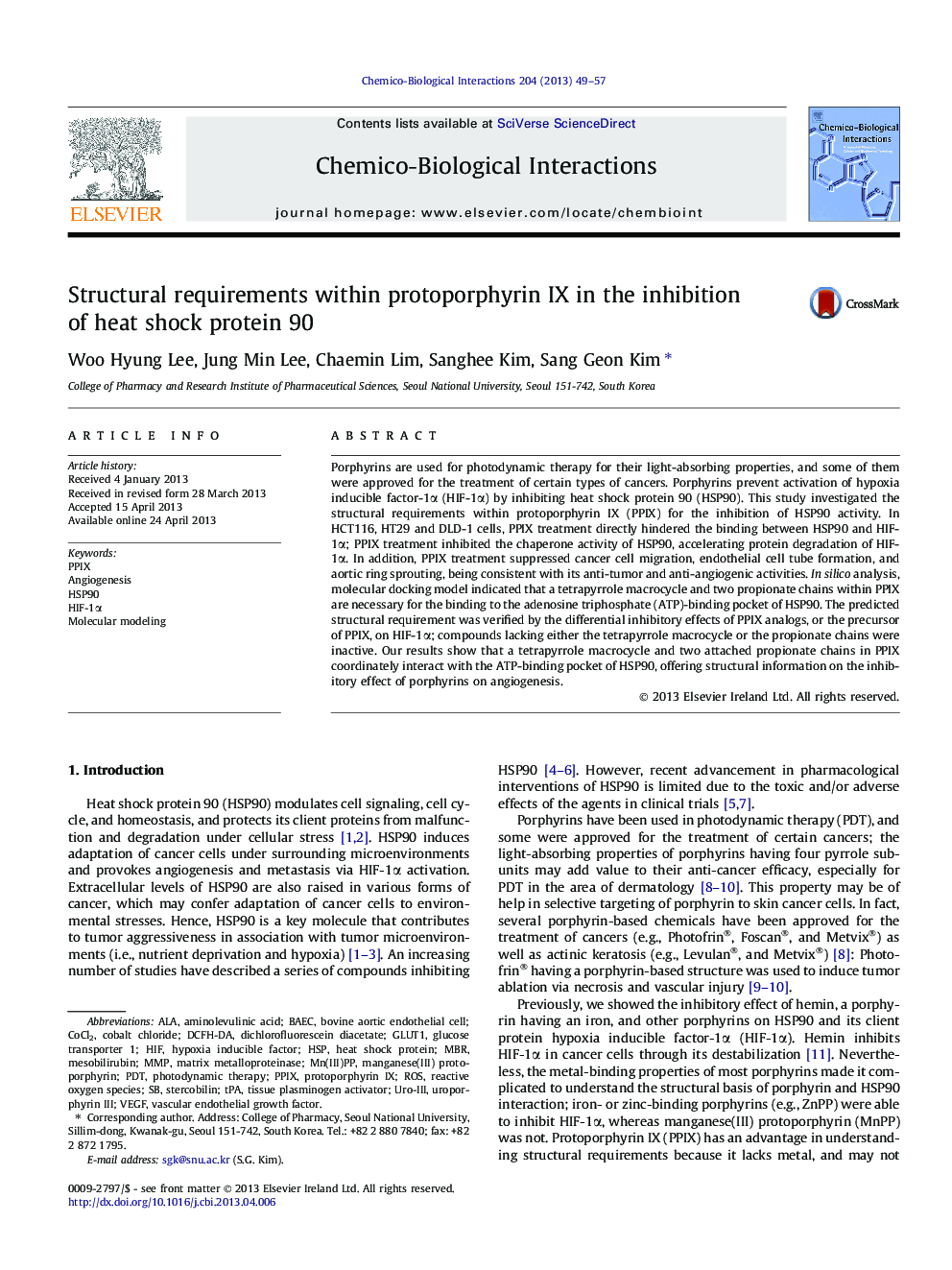| Article ID | Journal | Published Year | Pages | File Type |
|---|---|---|---|---|
| 5848196 | Chemico-Biological Interactions | 2013 | 9 Pages |
â¢This is the first study to show the structural requirements for the binding of a porphyrin compound to HSP90.â¢An in silico molecular docking model and experimental approaches revealed the anti-angiogenic activities of PPIX.â¢A tetrapyrrole macrocycle and propionate chains of porphyrins coordinately interact with the ATP-binding pocket of HSP90.â¢Our results may offer key structural information on the potential development of a new class of HSP90 inhibitors.
Porphyrins are used for photodynamic therapy for their light-absorbing properties, and some of them were approved for the treatment of certain types of cancers. Porphyrins prevent activation of hypoxia inducible factor-1α (HIF-1α) by inhibiting heat shock protein 90 (HSP90). This study investigated the structural requirements within protoporphyrin IX (PPIX) for the inhibition of HSP90 activity. In HCT116, HT29 and DLD-1 cells, PPIX treatment directly hindered the binding between HSP90 and HIF-1α; PPIX treatment inhibited the chaperone activity of HSP90, accelerating protein degradation of HIF-1α. In addition, PPIX treatment suppressed cancer cell migration, endothelial cell tube formation, and aortic ring sprouting, being consistent with its anti-tumor and anti-angiogenic activities. In silico analysis, molecular docking model indicated that a tetrapyrrole macrocycle and two propionate chains within PPIX are necessary for the binding to the adenosine triphosphate (ATP)-binding pocket of HSP90. The predicted structural requirement was verified by the differential inhibitory effects of PPIX analogs, or the precursor of PPIX, on HIF-1α; compounds lacking either the tetrapyrrole macrocycle or the propionate chains were inactive. Our results show that a tetrapyrrole macrocycle and two attached propionate chains in PPIX coordinately interact with the ATP-binding pocket of HSP90, offering structural information on the inhibitory effect of porphyrins on angiogenesis.
Graphical abstractDownload full-size image
